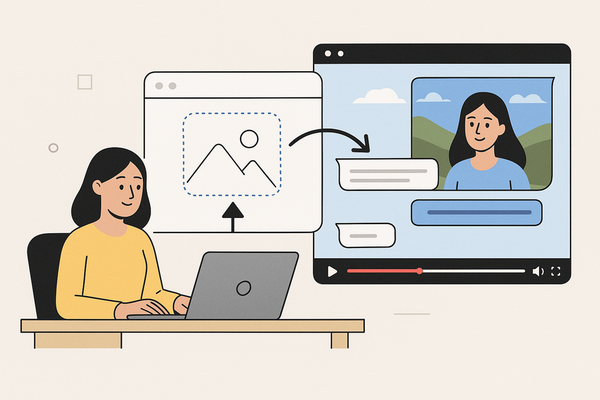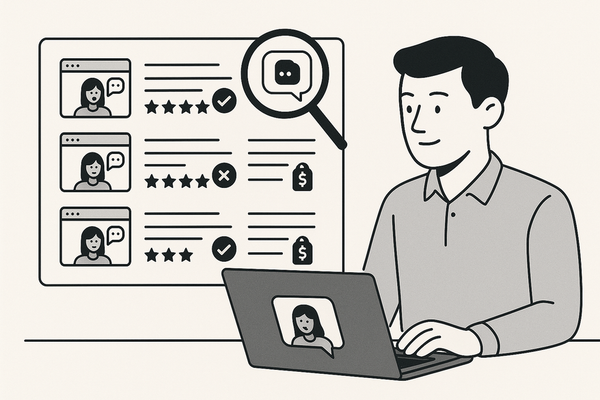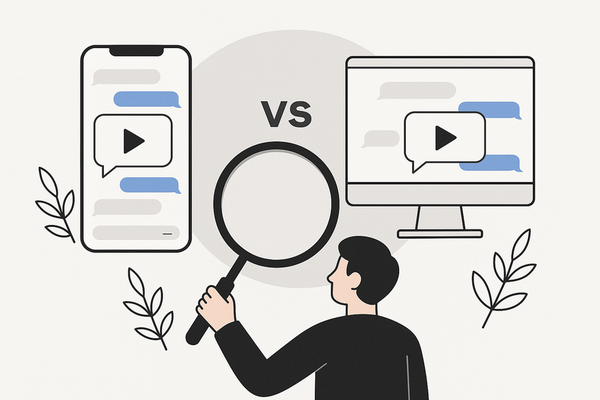Custom Image Backgrounds Chat Video Tutorial: A Step-by-Step Guide
Learn how to personalize your video calls and chats with custom image backgrounds using our step-by-step guide. Enhance your professional appearance today.

Estimated reading time: 4 minutes
Key Takeaways
- Create static and animated backgrounds using common file formats like JPG, PNG, and MP4
- Leverage tools such as Canva, Photoshop, and FFmpeg for design and encoding
- Follow a simple workflow: design, upload to Zoom & Teams, and customize
- Optimize performance and accessibility with best practices and troubleshooting tips
Table of Contents
- Introduction
- Section 1: Explaining Custom Image Backgrounds in Chat
- Section 2: Tools and Software Requirements
- Section 3: Step-by-Step Video Tutorial Outline
- Section 4: Troubleshooting Tips
- Section 5: Best Practices and Tips
- Conclusion
Welcome to this custom image backgrounds chat video tutorial. In today’s visually driven world, using custom image backgrounds in chat and video calls lets you personalize every conversation. Custom image backgrounds are user-uploaded static or animated images that serve as the backdrop behind you in a video conference or as the interface design in messaging apps.
With personalized backgrounds, you maintain brand consistency, enhance privacy, and convey a more professional appearance. Whether you’re hosting a virtual event, running a remote team meeting, or engaging students in an online class, a tailored background sets the right tone.
For creators interested in simulating messaging environments, tools like Vidulk - Fake Text Message Story App can help you design chat-style backdrops seamlessly.
By following this guide, you’ll master the art of custom image backgrounds for chat and video in under five minutes.
Section 1: Explaining Custom Image Backgrounds in Chat
Definition of Custom Image Backgrounds
- Static files (JPG, PNG) or animated media (MP4, GIF) used as a visual backdrop
- Replace your real background with branded scenes or themed settings
- Also known as virtual backgrounds or digital backdrops
Contexts & Use Cases
- Social Engagement: themed backdrops for birthdays, holidays, or live streams in messaging apps
- Corporate Messaging: deploy brand logos and office scenes in Teams or Zoom
- Education: simulate a classroom environment or display whiteboard previews remotely
Research Insights
- 67% of enterprise users report improved engagement when using custom backgrounds (Source: Wainhouse Research)
- Microsoft Teams supports high-resolution backgrounds up to 1920×1080 px (Source: Microsoft Teams Virtual Background)
- Zoom allows both static and video backgrounds for privacy and a professional look (Zoom support article)
Section 2: Tools and Software Requirements
Image Creation and Editing
- Canva: browser-based editor with 1920×1080 px templates
- Adobe Photoshop: advanced layer management and color correction
- GIMP: free, open-source alternative with masks and export formats
Video Editing for Animated Backgrounds
- Adobe Premiere Pro: timeline editing and H.264 export
- FFmpeg: command-line tool for batch MP4 encoding
Supported Chat & Video Apps
- Zoom: supports JPG, PNG, MP4 (max 5 MB) – Read more: Zoom support article
- Microsoft Teams: accepts JPG, PNG (max 20 MB)
- Slack: static backgrounds only (JPG, PNG)
System Requirements
- Recommended resolution: 1920×1080 px (16:9 aspect ratio)
- Minimum resolution: 1280×720 px
- At least 4 GB RAM and a mid-range GPU for smooth processing
Section 3: Step-by-Step Video Tutorial Outline
Intro to Video Tutorial (0:00–0:20)
- Goal: Set up a custom background in under five minutes
- Overview: design, upload, and customize
Step 1: Choosing or Creating an Image Background (0:20–1:30)
Theme Selection: professional (office settings) or casual (bright patterns)
Canva Demo:
- Open Canva > Create design > Custom size 1920×1080
- Choose a background or upload your logo
- Add text or a watermark
- Export:
• Static: PNG at maximum quality
• Animated: MP4 with H.264 at 30 fps
Step 2: Implementing the Background in Your Chat Application (1:30–3:00)
Zoom Example (1:30–2:15):
- Open Zoom Desktop > Settings > Background & Filters
- Click “+” to add image/video
- Select your PNG, JPG, or MP4 file
- Preview and adjust position
Microsoft Teams Example (2:15–3:00):
- Click profile icon > Settings > Devices > Background Effects
- Click “+ Add new” > Upload your PNG or JPG
- Select it and click “Apply and turn on video”
Step 3: Customization Tips for Perfect Fit (3:00–4:00)
- Mirror Toggle: adjust orientation
- Positioning: crop or reposition with sliders
- Lighting: even front lighting and subtle backlight
- Camera Resolution: test HD vs. 4K and ensure sufficient bandwidth
Embedding the Video (4:00–4:20)
Add chapter markers:
• 0:00 Intro
• 0:20 Create Background
• 1:30 Upload in Zoom
• 2:15 Upload in Teams
• 3:00 Customization Tips
Watch the full tutorial above for live demos!
Section 4: Troubleshooting Tips
- Background Not Visible: enable/disable green screen setting and update camera drivers
- Blurry Image: re-export at higher resolution and close bandwidth-heavy apps
- Format Errors: convert GIFs to MP4 using FFmpeg:
ffmpeg -i input.gif -c:v libx264 -crf 23 output.mp4
Section 5: Best Practices and Tips
Image Selection
- High Contrast: keep UI text legible
- Focal Point: frame your face off-center
- Simplicity: avoid busy, distracting patterns
Brand Consistency
- Color Palette: match your brand colors
- Watermark: add a low-opacity logo in a corner
Performance Optimization
- Image Compression: use tools like TinyPNG
- Video Encoding: apply a “Fast 1080p30” preset in HandBrake
- Cross-Device Testing: verify on desktop, mobile, and tablet
Accessibility Considerations
- Alt Text: provide descriptive text where possible
- UI Overlap: ensure no critical text is covered
- Color Blindness: avoid red/green combinations
Conclusion
We’ve covered definitions, tools, and a complete walkthrough for custom image backgrounds in chat and video. By following these steps and best practices, you can boost engagement, maintain brand consistency, and present a polished, professional presence.
FAQ
- What file formats work best?
- PNG or JPG for static backgrounds; MP4 (H.264 codec) for animated ones.
- What if my app doesn’t support animated backgrounds?
- Check the app’s documentation or use static images with subtle motion effects.
- How large can my file be?
- Zoom: max 5 MB; Teams: max 20 MB; Slack: keep under 2 MB for faster loading.





